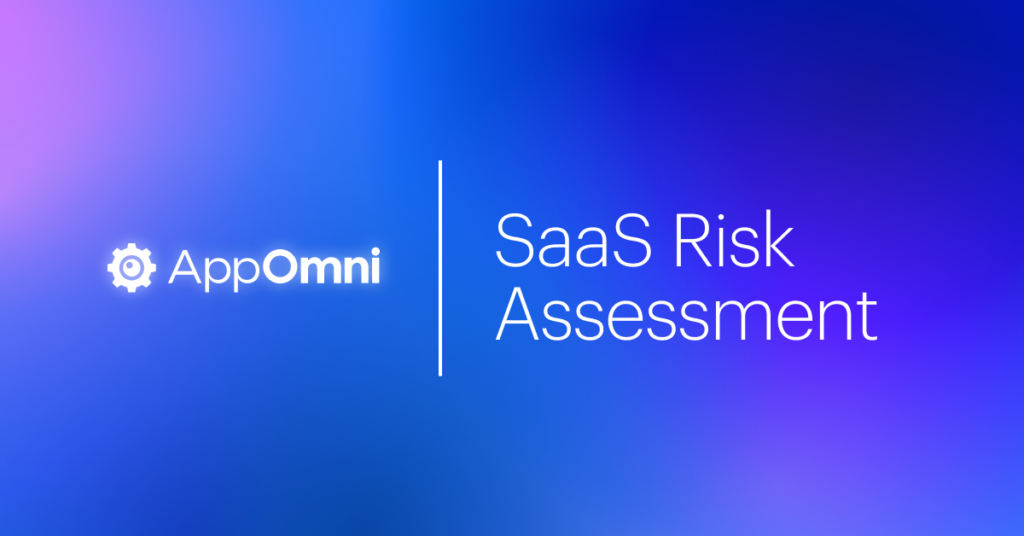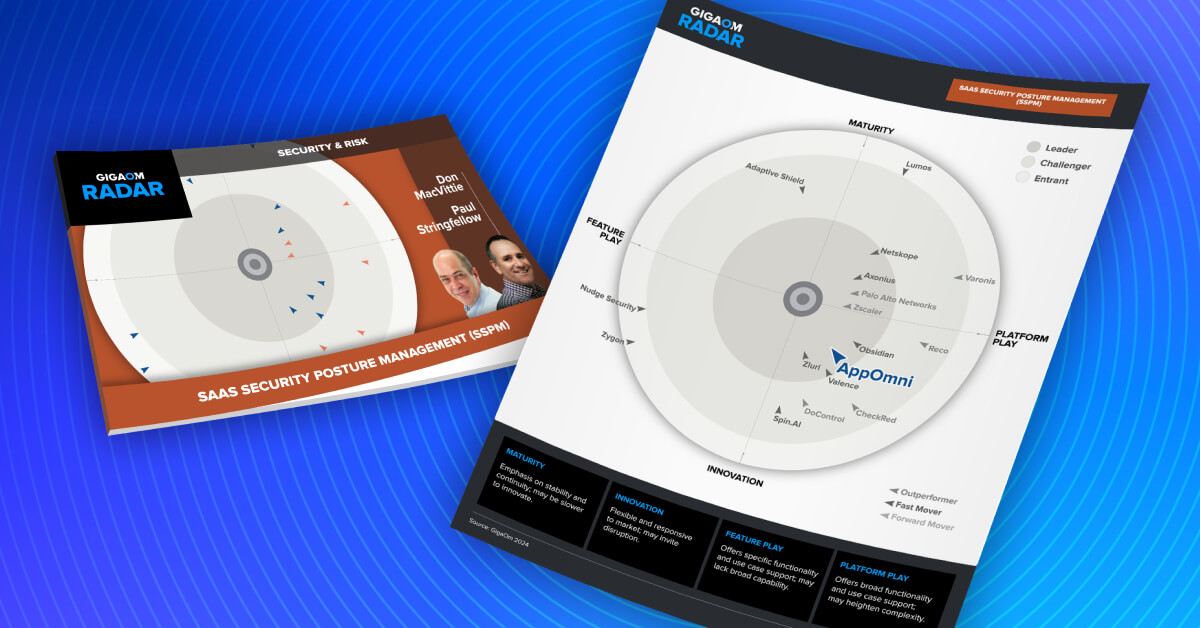As SaaS Security Posture Management (SSPM) solutions emerge, evaluating their role and potential in the security space is vital. This type of initiative is especially timely as IT budgets come under scrutiny while cybersecurity threats show no signs of diminishing.
After all, SSPM is no substitute for Cloud Security Posture Management’s (CSPM) ability to identify cloud network misconfigurations and secure your data stored in AWS, Azure, Google Cloud, and other cloud hosting solutions. For organizations with data stored solely in the cloud locations, CSPM’s risk assessment and remediation value is indisputable.
But what about your data stored everywhere else? And all the configurations within the dozens — if not hundreds — of SaaS tools your organization relies on every day?
These aren’t cocktail party hypotheticals of data loss and malware. The volume of high-profile security breaches and incidents related to SaaS and SaaS-to-SaaS (typically referred to as third-party) vendors is only growing. Verizon’s 15th Annual Data Breach Investigations Report (DBIR) shows this trend started gaining traction with the SolarWinds attack in 2020. And it has continued with more recent breaches affecting HubSpot, GitHub, and Okta in 2022.
CSPM isn’t equipped to handle this evolution of cybersecurity threats. To address the vulnerabilities related to SaaS applications—especially those storing sensitive data—you need a dedicated SaaS security posture management solution.
What does CSPM monitor—and why can’t it protect SaaS data?
CSPM vendors monitor the security and compliance posture of standard and custom cloud applications deployed into public cloud environments. And they typically provide compliance monitoring, DevOps, and dynamic cloud integration functionality.
With CSPM in place, your organization can be proactive, assess risk, reduce misconfigurations, and ensure your cloud ecosystem has the highest cloud security measures in place. But a CSPM is focused only on the data stored and used exclusively in your cloud architecture.
Relying on CSPM alone neglects the security posture of SaaS applications and their data — often a company’s most sensitive data. This leaves enterprise SaaS apps like Salesforce, Microsoft 365, and ServiceNow susceptible to risky configurations, configuration drift, and noncompliance. And the dozens of SaaS apps used by business units and departments are even more vulnerable to security compromises.
How does SSPM mitigate SaaS security vulnerabilities?
SSPM focuses on securing data housed in SaaS applications. It quickly and automatically reveals misconfigurations and related security vulnerabilities within SaaS apps.
Of course, SaaS’s much-touted flexibility is precisely what puts enterprises at risk for certain types of security vulnerabilities and misconfigurations. Every day, security and IT teams are not informed of changes made in enterprise SaaS environments, even with a security policy in place. These include:
- Users being added, removed, or having permissions changed
- New functionality being added to business units
- Vendor updates to features and/or configurations
- New 3rd party apps integrated into the SaaS application
Though seemingly harmless from a user’s or business owner’s perspective, this unmonitored and unobserved activity can result in security vulnerabilities and insecure SaaS data.
With SSPM in place, you’ll know what modifications employees are making in SaaS apps, and be able to prevent potentially harmful changes. Your organization will achieve automated and continuous monitoring of cloud-based SaaS applications like Salesforce, Microsoft 365, ServiceNow, and more. Your security team can detect overly permissive settings and help ensure compliance without adding to their workloads.
How do SSPM and CSPM data security capabilities compare?
| CSPM | SSPM | |
| Areas of Focus | Monitor cloud services like AWS, Microsoft Azure, and Google Cloud. | Monitor PaaS and SaaS applications like Salesforce, Microsoft 365, ServiceNow, and more. Some solutions also secure custom apps. |
| Benefits | Identify misconfigured networks Assess latest data risk Continuously monitor cloud environments | Manage 3rd party apps Continuously monitor SaaS environments Identify SaaS misconfigurations Detect overly permissive settings Automate security workflows Continuously detect threats Deliver remediation advice Simplify governance and risk compliance |
| Use Cases | Identify vulnerable cloud configuration settings Provide compliance for security frameworks Keep track of cloud-based services Manage changes made to logs | 24/7 visibility into SaaS apps Strengthen security posture Unified visibility and monitoring of all SaaS accounts and apps Fix common misconfigurations Monitor privilege levels and data access Inventory 3rd party apps Compliance monitoring and reporting |
| Security Violations Flagged | Data hosting misconfigurations Permission errors Missing MFA Data storage exposure | SaaS misconfigurations Permission errors Missing MFA Data storage exposure Data leaks Insider threats External hackers |
| Key Features | Integration with DevOps Ability to assess cloud service provider settings Reporting Track activities in real-time | Secure all SaaS apps Continuous monitoring Manage privilege levels & data access 3rd party application management Threat detection DevOps Misconfiguration remediation Compliance |
Is SSPM worth the investment?
Operating without an SSPM tool will force your organization to:
- Rely on each SaaS app to secure itself. If that application ever becomes compromised, the native security tool monitoring will be affected as well.
- Limit security insights and depth of monitoring to native app functionality. Your team will waste time managing dozens (in some cases hundreds) of security consoles, which typically don’t monitor the many integrations users have added. All too often, the security team’s workloads become more complicated and resource-intensive.
- Divert your team members from higher value work as they become security experts in every SaaS application your organization uses. This approach doesn’t scale.
These legacy security shortcomings are now more apparent to CISOs, CIOs and the industry at large.
Plus, the cost and reputational damage of one SaaS data incident far exceeds the investment in a SaaS-focused security posture. IBM reports that the costs of a data breach averages $4.45 million. After all, SSPM will give your enterprise the visibility, control, and compliance management to combat these challenges. CSPM solutions don’t deliver the necessary level of security for SaaS data.
Does your organization need SSPM, CSPM, or both?
Companies with sophisticated tech stacks that include both cloud providers and numerous SaaS applications likely need SSPM and CSPM to fully secure their data and prevent configuration drift.
Securing SaaS data requires a solution dedicated to protecting it, just as cloud environments require a solution dedicated to cloud security. SSPM delivers full visibility into an organization’s SaaS security posture, checking for compliance with industry standards and company policy, as well as flagging data access violations or misconfigurations and recommending remediation steps.
An SSPM solution can significantly improve the efficiency of a security team and comprehensively protect SaaS data throughout the increasingly complex SaaS application ecosystem.

Request Your Free Risk Assessment
Find out who has access to your SaaS data and learn how you can benefit from simplified and automated SaaS security with AppOmni.
Related Resources
-

AppOmni Achieves FedRAMP®️ “In Process” Status for Public Sector SaaS Security
AppOmni has achieved FedRAMP® “In Process” status, a major milestone in providing secure SaaS solutions to federal agencies.
-

Closing Security Gaps with AppOmni and Okta’s Integrated SaaS and Identity Protection
Read how AppOmni and Okta address the challenge of security teams correlating identity behavior with SaaS activity through the Shared Signals Framework (SSF).
-

AppOmni Named a Leader in the 2024 GigaOm Radar for SSPM
This blog discusses why GigaOm identified AppOmni as a leader in SaaS Security Posture Management (SSPM) and all the capabilities the platform provides.